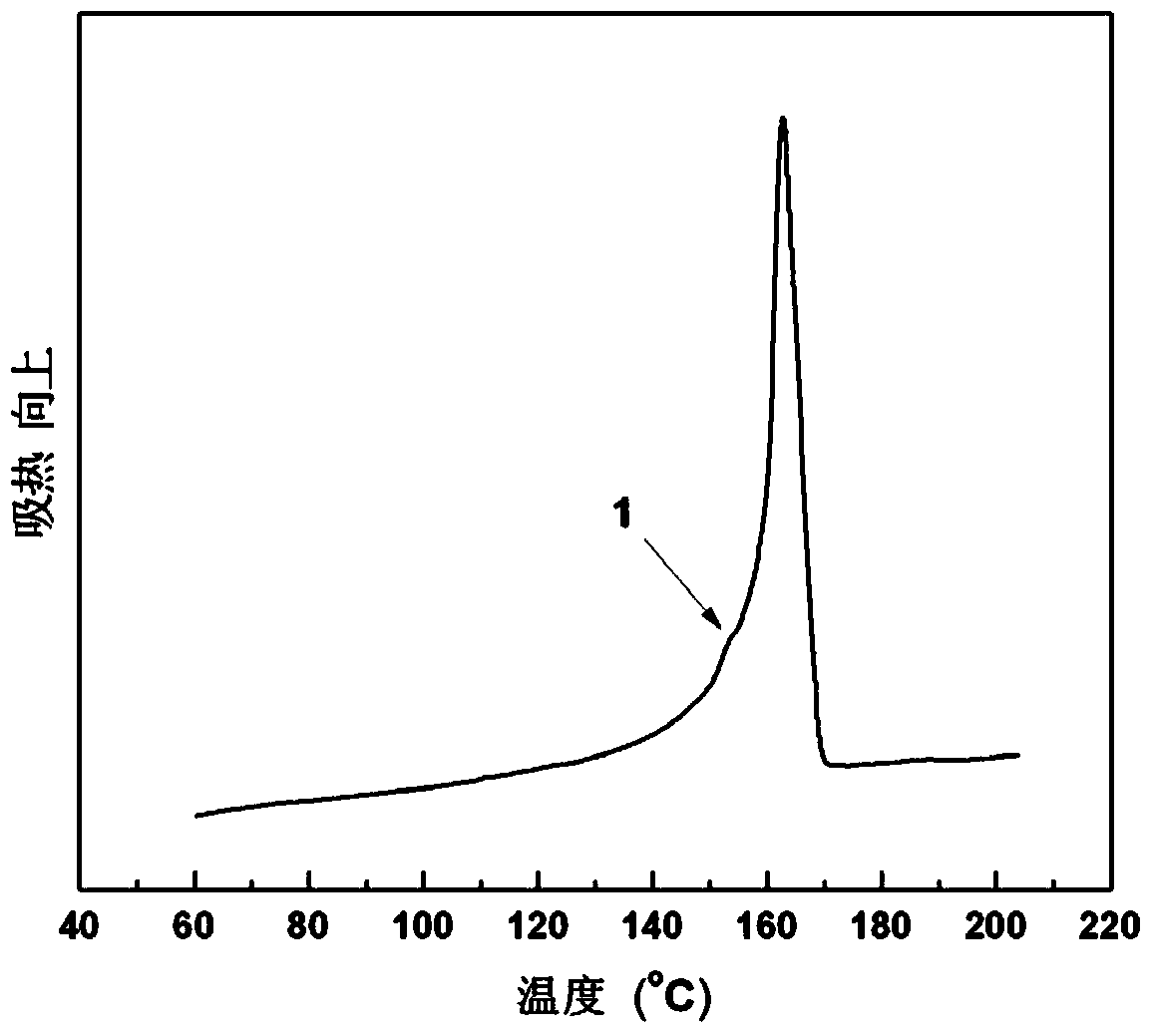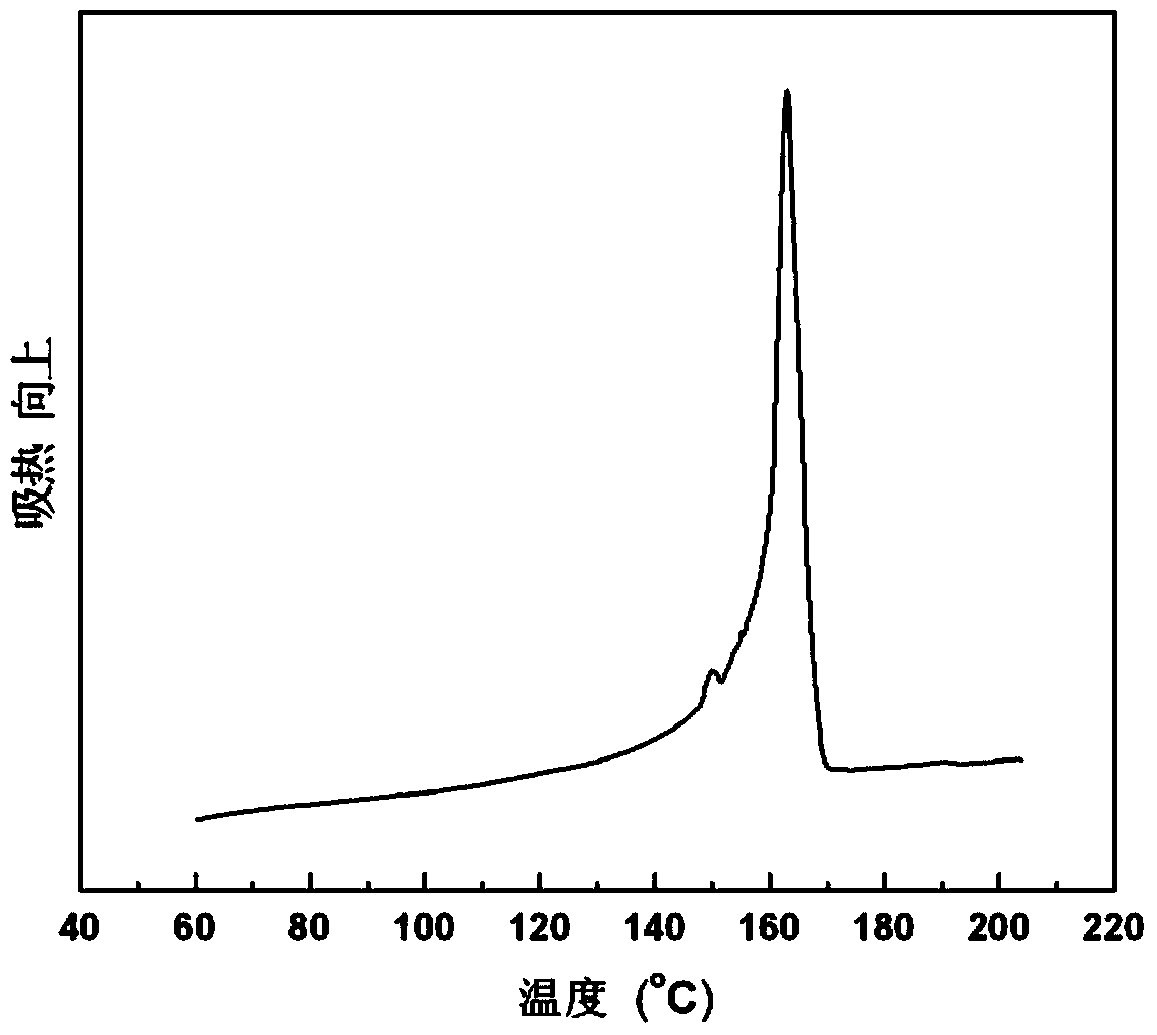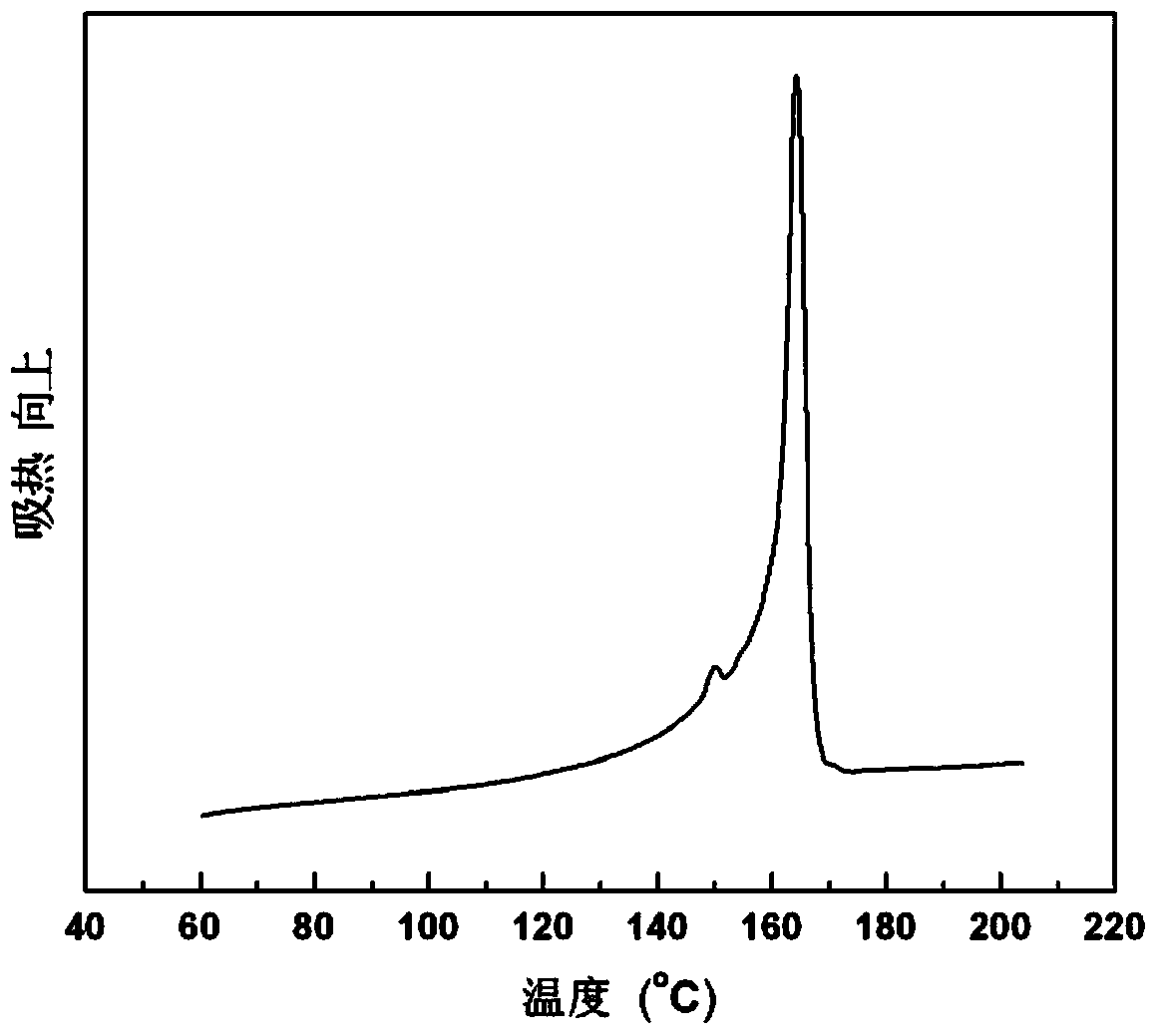Polypropylene powder for selective laser sintering and its preparation
A technology of laser sintering and polypropylene, applied in the direction of additive processing, etc., can solve the problems of restricting the application of PP powder to the performance of sintered parts, the irregular shape of polypropylene powder, and the difficulty of PP mixing evenly, and achieve high sphericity and good fluidity , the effect of uniform particle shape
- Summary
- Abstract
- Description
- Claims
- Application Information
AI Technical Summary
Problems solved by technology
Method used
Image
Examples
Embodiment 1
[0056] With 6 grams of polypropylene material (product brand PP-H-GD450, the melt index measured according to the above method is 45g / 10min), 0.06 gram of sodium dodecylsulfonate (abbreviated as SDS, analytically pure) and 100 milliliters of xylene Add it into a 250 ml flask, heat the flask to 145°C, and keep stirring at this temperature for 60 minutes to form a homogeneous polypropylene solution. Quickly put the flask containing the polypropylene solution into an ice-water bath at 0°C to quench, and continue to stand at this temperature for 30 minutes. It can be observed that polypropylene particles are precipitated from the solution, filtered, washed, and dried to obtain PP. powder. Sieve the PP powder and collect the PP powder with a particle size in the range of 100-800 mesh. Its appearance is as follows: Figure 5 shown. It is determined that the prepared PP powder has a particle size of 20-88 μm, a particle size distribution of D10=22 μm, D50=41 μm, and D90=74 μm. The...
Embodiment 2
[0059] 6 grams of polypropylene material (product designation PP-H-GD450, melt index is 45g / 10min), 0.3 grams of SDS and 100 milliliters of xylene are added in a 250 milliliter flask, and the flask is heated to 145 ° C. Stir at constant temperature for 60 minutes to form a homogeneous polypropylene solution. Quickly put the flask containing the polypropylene solution into an ice-water bath at 0°C to quench, and continue to stand at this temperature for 30 minutes. It can be observed that polypropylene particles are precipitated from the solution, filtered, washed, and dried to obtain PP. powder. Sieve the PP powder and collect the PP powder with a particle size in the range of 100-800 mesh. Its appearance is as follows: Image 6 shown. It is determined that the prepared PP powder has a particle size of 21-85 μm, a particle size distribution of D10=24 μm, D50=39 μm, and D90=72 μm. The bulk density of PP powder is 0.55g / cm 3 .
[0060] Analyze by DSC method according to the...
Embodiment 3
[0062] 6 grams of polypropylene material (product designation PP-H-GD450, melt index is 45g / 10min), 0.6 gram of SDS and 100 milliliters of dimethylbenzene are added in the 250 milliliter flask, heat this flask to 148 ℃, under this temperature condition Stir at constant temperature for 60 minutes to form a homogeneous polypropylene solution. Quickly put the flask containing the polypropylene solution into liquid nitrogen at -185°C to quench, and continue to stand at this temperature for 60 minutes. It can be observed that polypropylene particles are precipitated from the solution, filtered, washed, and dried to obtain PP powder. Sieve the PP powder and collect the PP powder with a particle size in the range of 100-800 mesh. Its appearance is as follows: image 3shown. It is determined that the prepared PP powder has a particle size of 21-80 μm, a particle size distribution of D10=23 μm, D50=45 μm, and D90=71 μm. The bulk density of PP powder is 0.55g / cm 3 .
[0063] Analyz...
PUM
| Property | Measurement | Unit |
|---|---|---|
| particle diameter | aaaaa | aaaaa |
| density | aaaaa | aaaaa |
| density | aaaaa | aaaaa |
Abstract
Description
Claims
Application Information
 Login to View More
Login to View More - R&D
- Intellectual Property
- Life Sciences
- Materials
- Tech Scout
- Unparalleled Data Quality
- Higher Quality Content
- 60% Fewer Hallucinations
Browse by: Latest US Patents, China's latest patents, Technical Efficacy Thesaurus, Application Domain, Technology Topic, Popular Technical Reports.
© 2025 PatSnap. All rights reserved.Legal|Privacy policy|Modern Slavery Act Transparency Statement|Sitemap|About US| Contact US: help@patsnap.com



